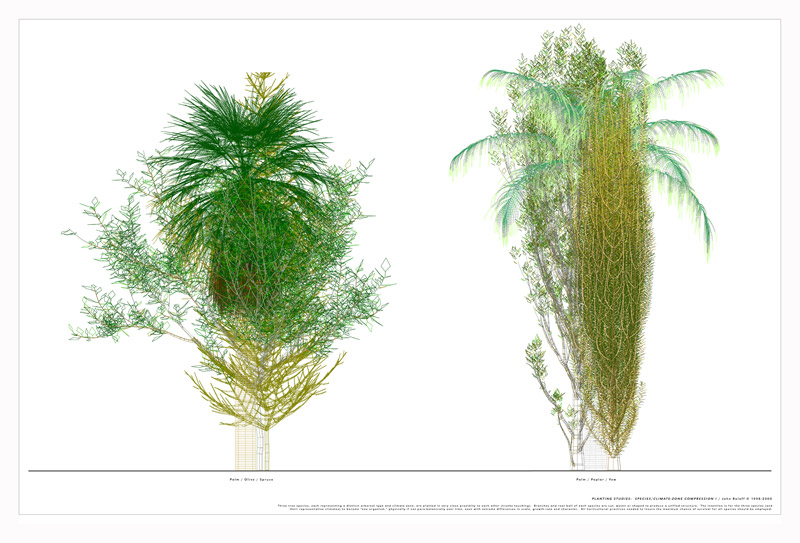Planting Studies: Species/Climate Compression
Drawing
Text:
Three tree species, each representing a distinct arboreal type and climate
zone, are planted in very close proximity to each other (trunks touching).
Branches and root ball of each species are cut, woven or shaped to produce
a unified structure. The intention is for the three species (and their representative
climates) to become "one organism," physically if not para-botanically
over time, even with extreme differences in scale, growth-rate and character.
All horticultural practices needed to insure the maximum chance of survival
for all species should be employed.
Planting Study: Species/Climate-Zone Compression I, 1998-2000
Palm/Olive/Spruce; Palm/Poplar/Yew
Planting Study: Species/Climate-Zone Compression II, 1998-2000
Cedar/Orange/Maple; Pine/Palm/Oak
These studies were instrumental in the conceptual development of Seventh
Climate (Paradise Reconsidered), I-5 Colonnade Park, Seattle, WA, 2006. In this project,
as the central feature, a tree group comprised of: Trachycarpus fortunei -
Windmill/Chusan Palm (Taiwan, Chusan Islands), Magnolia denudata - Yulan/Tulip
Magnolia (Central China), Betula jacquemontii - Himalayan Birch (Western Himalaya),
and Metasequoia glyptostroboides - Dawn Redwood (China, paleo-North America,
Asia, Europe), were planted root ball to root ball to form "one organism," and
individually to represent 4 of the project's 7 "climates."
Return to: Recent Projects; Research/Studies



